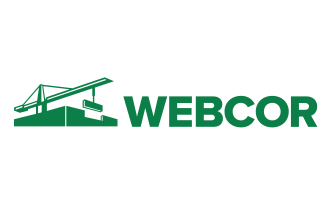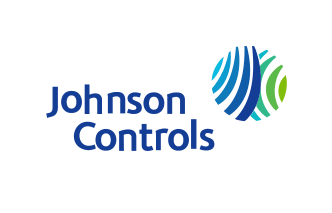Ways to Boost Productivity in Your Construction Business

The efficiency of a construction site depends on the productivity of the workforce, sufficient planning, and proper site management. Meeting the demands of the growing construction industry calls for innovative solutions to improve productivity.
Overview
The construction industry continues to flourish as a growing population and urbanization fuels the demand for infrastructure, residential and non-residential properties. Despite representing 13% of the global GDP (gross domestic product), the sector experiences slow productivity growth. Over the past two decades, productivity has grown at an annual rate of one percent. Due to the low productivity, the sector experiences project delays that lead to budgeting complexities and the disruption of workflows. Some of the productivity challenges in the construction industry are:
- Slow implementation of technology and automation tools
- Poor communication and coordination among the workforce
- Inefficient utilization of time
- Skilled labor shortage
For the sector to enhance its efficiency, it is crucial for stakeholders to seek solutions that address technological, workforce, and fleet management gaps. Apart from streamlining operations, these solutions guarantee a smooth transition towards sustainability in the construction sector.
In general, workforce productivity in the construction sector estimates the physical progress per unit per person-hour or any other metrics adopted by a company. For companies to sufficiently quantify productivity, they have to measure:
- The level of effectiveness of the labor — What is the total cost for constructing a unit area?
- Relative efficiency of the workforce — Is the workforce performing the right tasks at the right time?
Improving the productivity of the construction workforce comes with radical changes in sector regulations, research and design practices, workforce management, and on-site management strategies. Construction companies can boost their productivity by incorporating the following ideas into their business operations.
1. Implement Digital Technology
The project design phase consumes a considerable amount of time. Most businesses create standard design libraries for repeatable construction elements to reduce project design time. Through digital tools such as BIM (building information modeling), companies can create multiple designs, develop digital prototypes, and analyze the sustainability of new construction materials before physical implementation.
Using the 5-D BIM technology grants an organization the ability to transition into complex projects like underwater civil projects which adopt non-conventional parameter specifications.
At construction sites, supervisors work with extensive teams. They assign work and dispatch employees to the appropriate working locations depending on their skills and availability. While performing their duties, the company has to update the attendance of the workforce in real-time, keep a log of construction activities, and reconcile payrolls to match timesheets.
Relying on manual tools to perform these tasks is tedious and can impede the transparency of operations. Through technology, companies can improve workforce management by providing automated tools for multi-location scheduling and timesheet management. It creates transparency and allows the company to track productivity in real-time, facilitates accurate dispensation of information, and enhances labor planning to avert employee shortages.
Reducing construction waste, site safety incidents, and supply chain inconsistencies remains a challenge in the construction sector, leading to project delays. Companies are undertaking rigorous research and development to optimize operations and minimize risk, which causes costly delays. Technologies like digital twins enable companies to optimize their designs, while analytics software provides them with insights on how to streamline supply chains. In the process, the company minimizes project execution costs and effectively utilizes the workforce.
2. Continuously Train Your Workforce
Although the construction sector is enjoying steady growth, it is facing a shortage of skilled workers. As a result, companies have to find anyone interested in the construction work and expose them to on-the-job training. For business owners, they have to offer reasonable financial compensation to their skilled workforce. Apart from prioritizing cost-effective operations, companies have to maintain a stable workforce.
Companies that establish apprenticeship programs can attract a younger talent pool. Such programs ensure that the skills of the workforce meet the prevailing business needs. The apprentices learn the ropes of a trade by engaging in different construction tasks, equipping them with all-around skills. In due course, the team of apprentices fills in the vacant positions or replaces the aging workforce, ensuring the continuity of business operations.
As technological solutions make their way into the construction sector, there is a need for business owners to equip their staff with basic IT knowledge. The company hosts these solutions through cloud technologies and distributes them to the workforce through mobile devices or computers. Through training, the company describes how to fill in attendance records, record daily tasks, request materials/tools, and communicate with other team members through mobile applications.
Training is essential for enforcing a safety culture and enables the company to communicate any changes in safety standards. By training the workforce on safety and how to use advanced technological tools, companies enhance productivity by:
- Minimizing safety incidents
- Ensuring the workforce performs the correct work at the right time
- Providing timely access to critical information on mobile devices on project changes
3. Streamline on-Site Implementation
Streamlining on-site implementation involves a raft of lean operational measures that:
- Limit redundant activities
- Eliminate downtime
- Maximize construction materials — Keep construction waste at manageable levels
- Increase the utilization of construction equipment — Availability and timely maintenance of equipment
- Prevent unnecessary downtime — Non-designated break from work
To successfully streamline site operations, companies need to combine technology and encourage a progressive mindset among the workforce. They have to understand the importance of completing tasks within the desired timelines. The company should establish and enforce safety and construction standards, monitor the discipline of the workforce, and retain efficient workflows.
By assigning KPIs (key performance indicators), business owners can evaluate the project progress and organize rewards or incentives for teams that complete milestones in time. It motivates the workforce and encourages them to meet project goals.
Planning plays a crucial role in the success of any project. Before beginning the project, the company needs to create a PID (project initiation document) which lays down all the project requirements, project costs, and implementation timelines. It enables the company to plan for the workforce, formulate project goals, and create site-specific productivity measurement metrics.
The company needs to create a solid plan for logistics and supply chains. It minimizes interruptions to construction schedules and averts resource misallocation or misappropriation. With proper planning, every team member becomes aware of the project’s workflow process and productivity enhancement measures.
4. Keep Communication Clear
Solving productivity problems requires proper communication between the different levels of the workforce. Every team member, beginning from the architects to the on-site construction employee has to read from the same page at every project stage. Senior-level management must be aware of any on-site constraints and challenges affecting site construction workers. On the other hand, the implementation teams require timely updates on policy changes and project variations.
Slight communication breakdowns can result in project variations which is a leading cause for rework. When companies establish clear communication channels like Fieldwire, it is easier for employees from different professions to coordinate. Through mutual coordination, they can identify process bottlenecks and brainstorm ideas to eliminate them. With the evolving technology, the company distributes newsletters, reviews, and informational articles through mobile-based applications.
When companies communicate the importance of productivity to their employees and how it impacts daily schedules, the workforce develops a workplace culture that fosters teamwork, respect for each other, and adherence to site protocols. Communication channels serve as avenues for supervisors to conduct remote check-ins and verify whether the employees are at their designated places of work. It simplifies employee management and improves employee morale.
Summing Up
As the construction industry adjusts to market dynamics, business owners need to work towards improving the productivity of their workforce. Companies need to update their operating standards, match the skills demands of the employees, and adopt technological solutions as much as possible. Investing in the relevant technology guarantees workforce visibility and supplements project management strategies to steer businesses towards better profitability.
To understand how Fieldwire can help you and your team manage people and projects more efficiently, please register for a live demo of our platform below.
Derek spearheads key initiatives at Deputy, a global workforce management platform for employee scheduling, timesheets and communication. With a focus on construction and healthcare, Derek helps business owners and workforce leaders simplify employment law compliance, keep labor cost in line and build award-winning workplaces. Derek has over 16 years’ experience in delivering data-driven sales and marketing strategies to SaaS companies like MarketSource and Griswold Home Care.

 Derek Jones •
Derek Jones • 
















